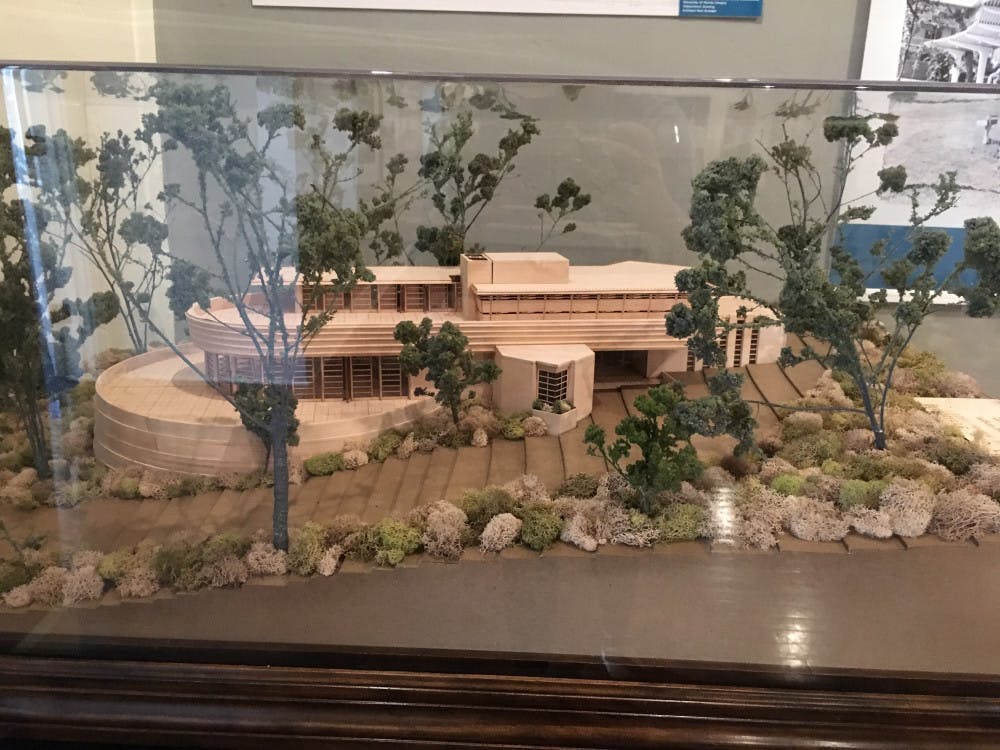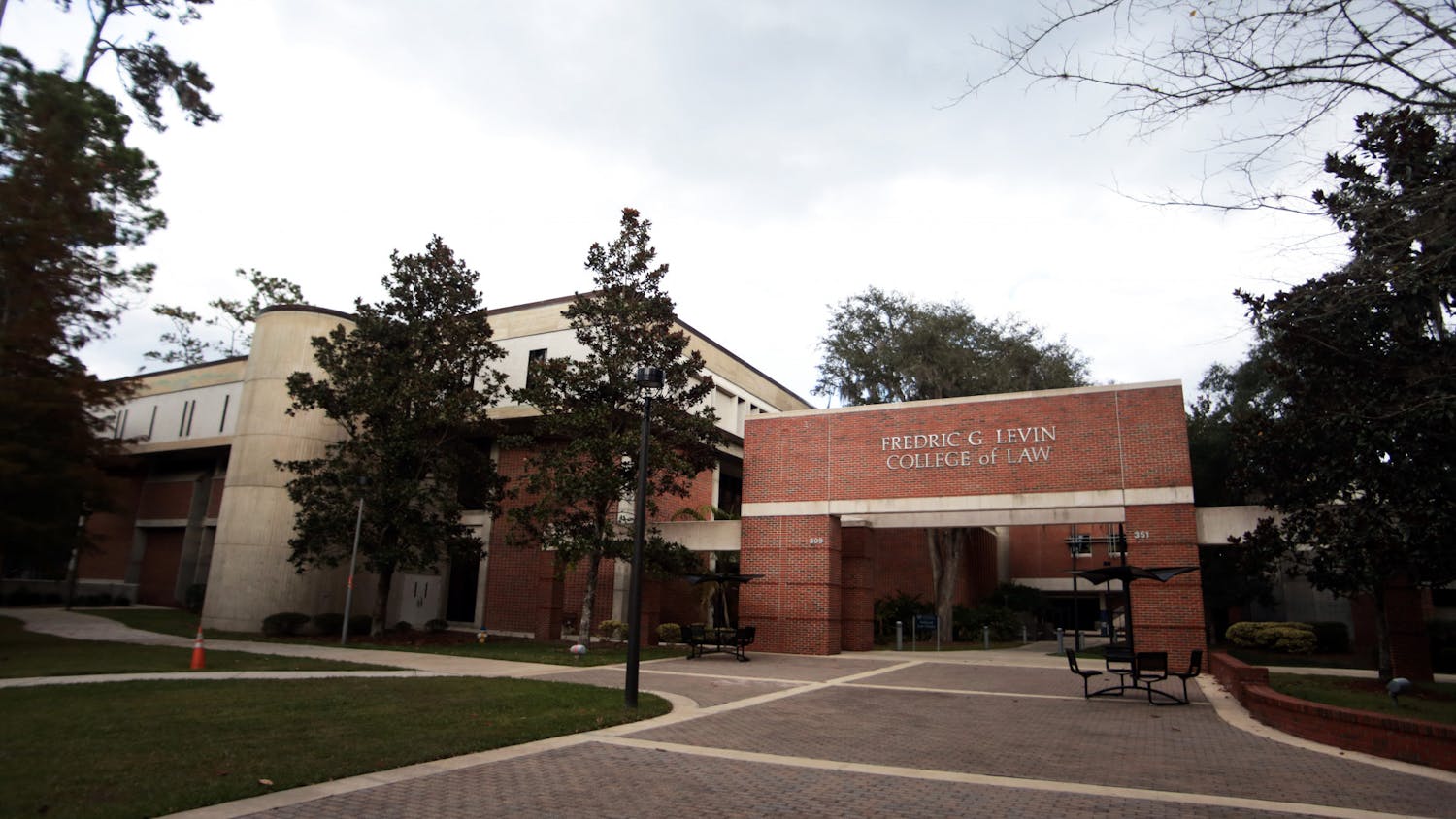Gainesville’s land developments may put the city’s architectural history at risk.
The city showcases a mid-twentieth modern style in its buildings that emphasizes functionality instead of just design.
A national register for the landmarks can protect the buildings, but it isn’t guaranteed.
New construction and progress is good for the city, but it means people need to take the extra step to protect the history within Gainesville, said Kaitlyn Hof-Mahoney, the curator of collections at Matheson History Museum.
“Preservation is not anti-progress,” Hof-Mahoney said. “These buildings can be reused in creative ways.”
In its efforts to promote building preservation, Gainesville Modern hosted its sixth annual Gainesville Modern Weekend, from Thursday to Saturday. The event showcased Gainesville’s modern landmarks that could potentially be listed on the National or Local Register of Historic Places, Hof-Mahoney said.
Designation on the National Register of Historic Places is honorific and does not afford any protections. In order to qualify, a landmark must be associated with events that have made a significant contribution to history or associated with a significant person in the past or possess high artistic value or embody the character of a type, period or method of construction.
Gainesville has five local historic districts, protecting more than 1,500 structures and 10 buildings listed on the Local Register of Historic Places.
Some of the buildings included are the Hippodrome State Theatre and the Matheson House, both listed in 1984.
Places such as the Old Gainesville Depot, listed in 1996, and Star Garage Building, listed in 1985, are included on the National Register.
Some of the structures recommended to be included are the University Lutheran Church, at 1826 W. University Ave., built in 1961 and Gainesville City Hall and former
Public Library, built in 1969.
Among these buildings, the University Lutheran Church’s congregation has decided to move ahead with seeking historical landmark status, Hof-Mahoney said.
Several UF buildings are also considered modern landmarks, she said. Rawlings Hall, The Hub, Architecture Building and Yulee-Mallory-Reid Dorm Complex reflect the transition from the collegiate gothic style, which is inspired by medieval architecture, to a more modernist approach.
Construction in Gainesville took off after World War II, said Morris Hylton, UF’s Historic Preservation Program director and president of Gainesville Modern, a non-profit working to preserve the city’s architectural past.
“It’s time for the next generation of buildings to start becoming part of that landscape to help connect the city with its recent past,” HofMahoney said.
A survey conducted in Fall 2017, in partnership with UF’s Historic Preservation Program, City of Gainesville Department of Doing and Gainesville Modern, showed 70 to 80 percent of buildings in the city were built between 1945 and 1975 and followed the style, Hylton said.
Passing the G.I. Bill, a law that provides benefits to returning World War II veterans including low-cost mortgages, spurred construction.
Because of this, a large portion of Gainesville follows the mid-twentieth century architecture style, Hylton said.
However, this rapid construction led to large homes near downtown being destroyed and replaced by law offices, banks and parking lots, Hylton said.
In the early 1970s, newer residents began to fight to preserve these
neighborhoods, Hylton said. The city also sponsored restoration projects like the Thomas Center, the Hippodrome and the Seagle Building.
“Gainesville has long been a city characterized by innovation and creativity, and mid-century architecture reflects these qualities,” Hylton said.
Preservation is about honoring a place’s history and managing change in an effective way, Hylton said.
However, people have misconceptions and a hard time realizing something built during their own lifetime is significant and worth saving.
“These houses have this amazing history, so we’re not just owners
we’re stewards of history,” Hylton said. “It’s not just about architecture or buildings, it’s about people.”
Correction: Gainesville Modern hosted the weekend, and designation on the National Register of Historic Places is honorific and does not afford any protections. In order to qualify, a landmark must be associated with events that have made a significant contribution to history or associated with a significant person in the past or possess high artistic value or embody the character of a type, period or method of construction. The Alligator previously reported otherwise
A model of the unbuilt Zeta Beta Tau Fraternity House designed by Frank Lloyd Wright. The design for the house was drawn in 1954 and followed the mid-century style, but due in part to code issues, the house was never built.
The layout of the current Bo Diddley Plaza displayed during Gainesville Modern Weekend at Matheson History Museum. City Hall follows the mid-century modern architectural style and qualifies to be on either the National or Local Register of Historic Places.






